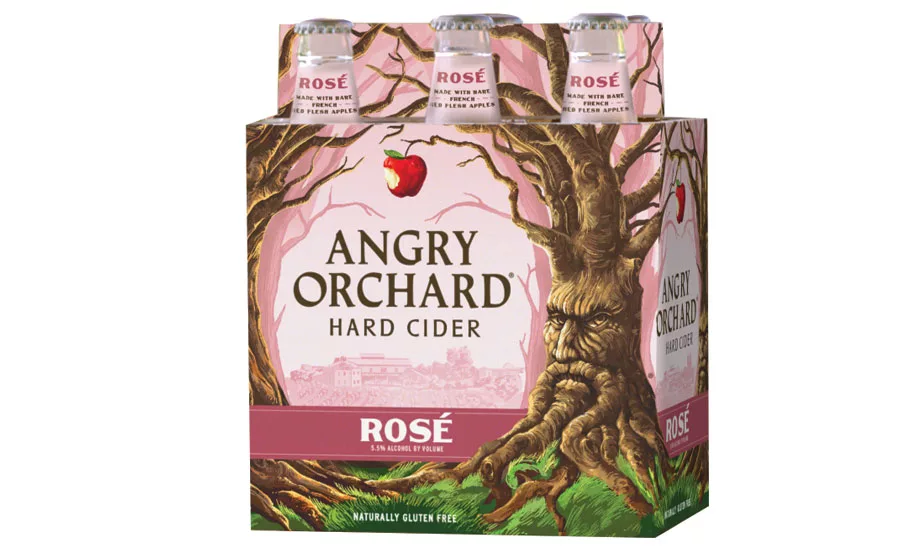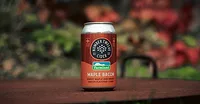2019 Beer Report: Hard ciders benefits from diverse flavor profiles
Packaging innovations also benefit beer segment

In the United States, the hard cider market has experienced its shares of ups and downs. “IBISWorld estimates that the cider production industry has experienced robust growth over the past five years, as renewed interest in the beverage has encouraged a slew of new operators to enter the industry,” says Chris Lombardo, lead industry analyst for Los Angeles-based IBISWorld. “Still much of this growth occurred at the beginning of the five-year period, with the later years becoming more volatile. Many cider operators have mirrored the craft brewery model, offering ancillary services along with a variety of cider options. Moreover, as the consumers continue to diversify their alcoholic beverage consumption, ciders have experienced heightened demand.”
According to Chicago-based Information Resources Inc. (IRI), the hard cider market was up 7.4 percent in case sales and 10.1 percent in dollar sales for the 52 weeks ending Dec. 30, 2018, in total U.S. multi-outlets, including convenience stores. This marks a notable change for the market, which was down 6.1 percent in volume and down 3.1 percent in dollar sales during the same time period in 2017.
Brian Sudano, managing partner for New York-based Beverage Marketing Corporation (BMC), highlights that hard ciders performance tends to be tied to other markets that it plays against as well as its new innovations.
“Hard cider interacts heavily with the alternative beverage alcohol segment — [flavored malt beverages] (FMBs) are part of this segment,” he says. “When cider had a lot of flavor innovation and heavy investment behind the category, it grew rapidly. However, as innovation shifted to other segments — most recently Spiked Seltzer — the category has struggled. This is similar to other recent innovation successes that eventually struggled such as hard soda.”
Sudano suggests that focus directed toward flavor profiles were responsible for previous growth within hard ciders.
“Flavored hard cider has changed the category dynamics and what drove its last leg of growth,” he says. “Before Angry Orchard pursued the flavor strategy, hard cider was slow growing and under 8 million cases. The expansion into flavors, among other things, drove the category to near 30 million cases. However, it also moved the category from being an apple-based drink in traditional format to more toward the FMB space. Now hard cider is more like a segment within FMBs versus a stand-alone category.”
(Brand family)
| DOLLAR SALES | % CHANGE VS. PRIOR YEAR | CASE SALES | % CHANGE VS. PRIOR YEAR | |
| Angry Orchard | $245,553,013 | 13.4 | 6,721,459 | 11.1 |
| Bold Rock | $25,766,388 | 30.8 | 683,743 | 30.1 |
| Strongbow | $22,682,857 | -15.4 | 603,482 | -16.4 |
| Stella Artois Cidre | $15,575,985 | -14.5 | 446,562 | -15.3 |
| 2 Towns | $12,177,572 | 49.6 | 189,491 | 55.3 |
| Austin Eastciders | $11,215,656 | 68.8 | 264,017 | 73.1 |
| Ace | $10,356,258 | 37.6 | 249,986 | 37.2 |
| Smith and Forge | $8,491,167 | -38 | 254,204 | -38.9 |
| Crispin | $7,984,783 | 26.2 | 189,580 | 28.8 |
| Woodchuck | $7,432,184 | -35.6 | 190,754 | -38.8 |
| Total sales* | $433,459,271 | 10.1 | 11,145,006 | 7.4 |
*Includes brands not listed.
Source: Information Resources Inc. (IRI), Chicago. Total U.S. supermarkets, drug stores, gas and convenience stores, mass merchandisers, military commissaries, and select club and dollar retail chains for the 52 weeks ending Dec. 30, 2018.
Now that the segment has returned to growth, industry analysts are pointing to a number of factors that have helped hard ciders to be in the black.
“If I look at the cider vendors, I see that 11 of the top 15 cider vendors saw growth in 2018, so cider still does seem to be very healthy and most of the cider vendors do continue to show growth and health,” IRI’s Livingston says.
Last year also saw numerous cider producers develop rosé varietals, including Crispin Cider Co., Woodchuck Hard Cider, Strongbow Hard Cider, Angry Orchard and Bold Rock.
As an extension of that, Livingston says that Angry Orchard Rosé had the largest incremental impact on the hard cider segment.
However, Rosé hard cider releases are not the only way that producers are tapping into flavor innovations, analysts note.
“Cider producers are continually experimenting with new cider flavors with pear becoming a major substitute for apples,” IBISWorld’s Lombardo says. “Still, apple ciders account for the highest share of revenue.”
Outside of the apple ciders, 2 Towns Ciderhouse released Pearadise, a limited-edition hard cider that features Washington-grown Anjou pears, Oregon-grown Muscat grapes and fresh-pressed 100 percent Northwest apples, the company says. The 8.6 percent alcohol-by-volume Pearadise contains a full bodied, ripe pear character and a touch of floral notes, it adds.
Another positive for the hard cider space has been the performance of “micro” cideries.
“Some the local more craft-oriented hard ciders are growing,” BMC’s Sudano says. “As there are more craft like providers of hard cider, this portion of the category is less impacted by FMB trends but it is very small.”
For instance, Bold Rock Hard Cider and 2 Towns posted volume gains of 30 percent and 55 percent, respectively, based on IRI data.
Brand owners also are turning to new packaging formats to expand occasions for hard ciders.
Strongbow Hard Ciders, a brand of White Plains, N.Y.-based Heineken USA Inc., announced the launch of 100-calorie, 8.5-ounce slim cans in a 12-can variety pack with three flavor varietals: Dry Pear, Rosé Apple and Original Dry.
“Our 100 Cal Slim Cans meet an emerging consumer need. Canned wine is up 290 percent [compound annual growth rate] and hard seltzers are booming — plus 199 percent [year to date] — so with only 100 calories per can, our new 8.5-ounce size creates a better-for-you, full-flavored and fast-selling option,” said Jessica Robinson, vice president of emerging brands for Heineken USA, in a statement, citing sales data from Nielsen for FDCM+ through May 2018. BI
Looking for a reprint of this article?
From high-res PDFs to custom plaques, order your copy today!





